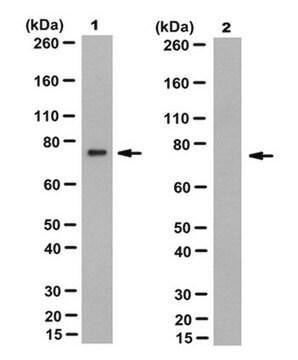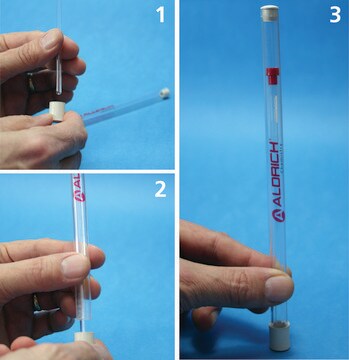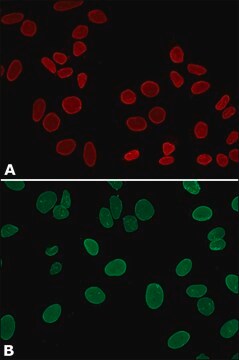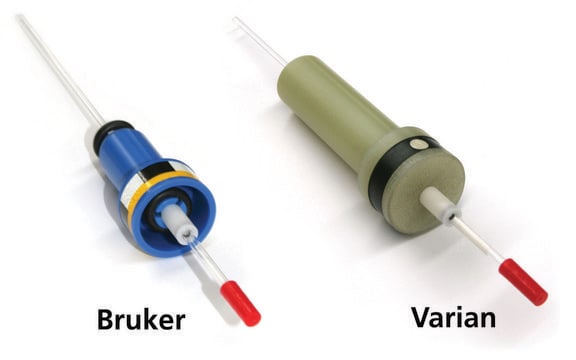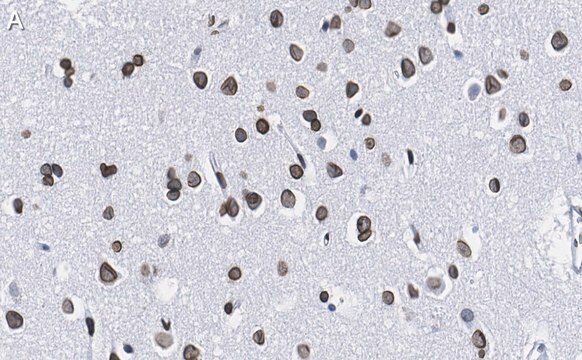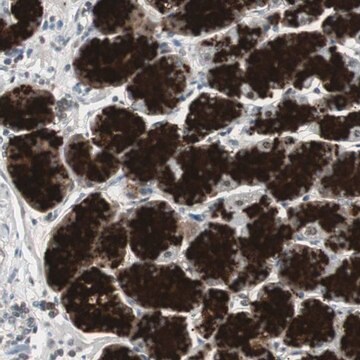MABT858
Anti-prelamin A Antibody, clone PL-1C7
clone PL-1C7, from mouse
Sinônimo(s):
LMNA
About This Item
Produtos recomendados
fonte biológica
mouse
Nível de qualidade
forma do anticorpo
purified antibody
tipo de produto de anticorpo
primary antibodies
clone
PL-1C7, monoclonal
reatividade de espécies
mouse, human
embalagem
antibody small pack of 25 μg
técnica(s)
ELISA: suitable
flow cytometry: suitable
immunocytochemistry: suitable
western blot: suitable
Isotipo
IgG2bκ
nº de adesão NCBI
nº de adesão UniProt
Condições de expedição
ambient
modificação pós-traducional do alvo
unmodified
Informações sobre genes
human ... LMNA(4000)
Descrição geral
Especificidade
Imunogênio
Aplicação
Cell Structure
Flow Cytometry Analysis: A representative lot detected prelamin A in Flow Cytometry applications (Casasola, A., et. al. (2016). Nucleus. 7(1):84-102).
Western Blotting Analysis: A representative lot detected prelamin A in Western Blotting applications (Casasola, A., et. al. (2016). Nucleus. 7(1):84-102).
Immunocytochemistry Analysis: 1 µg/mL from a representative lot detected prelamin A in C2C12 cells with Farnesyl transferase inhibitor Lonafarnib (Courtesy of Fred Hutchinson Cancer Research Center, Seattle, Washington USA).
ELISA Analysis: A representative lot detected prelamin A in ELISA applications (Casasola, A., et. al. (2016). Nucleus. 7(1):84-102).
Immunocytochemistry Analysis: A representative lot detected prelamin A in Immunocytochemistry applications (Casasola, A., et. al. (2016). Nucleus. 7(1):84-102).
Qualidade
Western Blotting Analysis: 2 µg/mL of this antibody detected prelamin A in C2C12 cell lysate.
Descrição-alvo
forma física
Armazenamento e estabilidade
Outras notas
Exoneração de responsabilidade
Não está encontrando o produto certo?
Experimente o nosso Ferramenta de seleção de produtos.
recomendado
Código de classe de armazenamento
12 - Non Combustible Liquids
Classe de risco de água (WGK)
WGK 1
Ponto de fulgor (°F)
does not flash
Ponto de fulgor (°C)
does not flash
Certificados de análise (COA)
Busque Certificados de análise (COA) digitando o Número do Lote do produto. Os números de lote e remessa podem ser encontrados no rótulo de um produto após a palavra “Lot” ou “Batch”.
Já possui este produto?
Encontre a documentação dos produtos que você adquiriu recentemente na biblioteca de documentos.
Nossa equipe de cientistas tem experiência em todas as áreas de pesquisa, incluindo Life Sciences, ciência de materiais, síntese química, cromatografia, química analítica e muitas outras.
Entre em contato com a assistência técnica